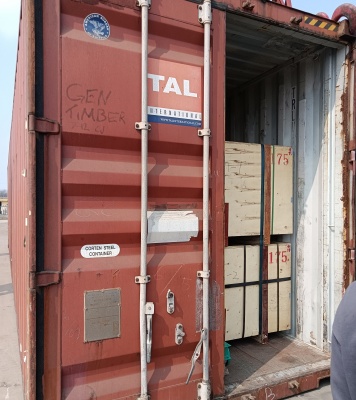We shipped some spare parts of gypsum board machine to Kuwait.
Components of a Gypsum Board Machine:
Raw Material Feeding System: This includes equipment for feeding gypsum powder, water, and additives into the production line.
Mixing System: The raw materials are mixed to form a slurry.
Forming Station: The slurry is then spread onto a moving belt, where it is sandwiched between two sheets of paper. This creates the continuous gypsum board.
Setting Belt: The board is conveyed along a belt to allow the gypsum to set and harden.
Cutting Machine: Once the board reaches the desired length, it is cut to size.
Drying System: The cut boards are dried in a drying chamber or kiln to remove excess moisture.
Edge Trimming and Finishing: The edges of the boards are trimmed, and the surfaces are finished to ensure uniform thickness and smoothness.
Stacking and Packaging: The finished boards are stacked and packaged for shipment.
Key Features:
Automation: Modern gypsum board machines are highly automated, ensuring consistent quality and high production rates.
Customization: Machines can be adjusted to produce boards of different sizes and thicknesses.
Efficiency: Advanced machines are designed to maximize energy efficiency and minimize waste.
Durability: Constructed from robust materials to ensure long service life and reliability.
Applications:
Residential Construction: Used for walls and ceilings in homes.
Commercial Buildings: Essential for office spaces, retail buildings, and other commercial structures.
Industrial Applications: Used in the construction of factories and warehouses.
Benefits:
Cost-Effective: Gypsum boards are an affordable building material.
Fire-Resistant: Gypsum's natural fire resistance makes it a safe choice for construction.
Easy Installation: Lightweight and easy to cut and install.
Sound Insulation: Provides good acoustic properties, reducing noise transfer between rooms.

Hot tag:
Processing demand survey
x